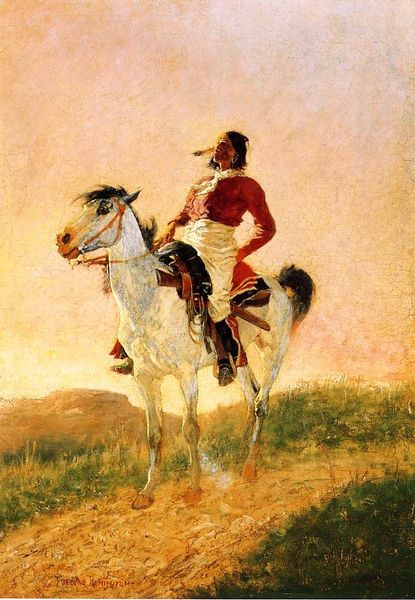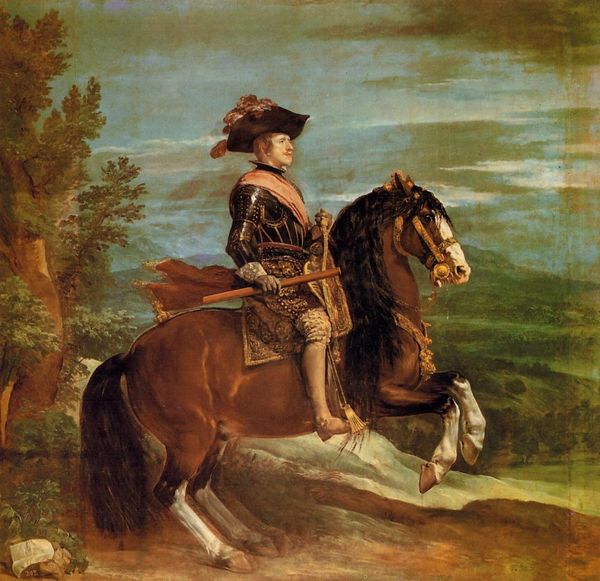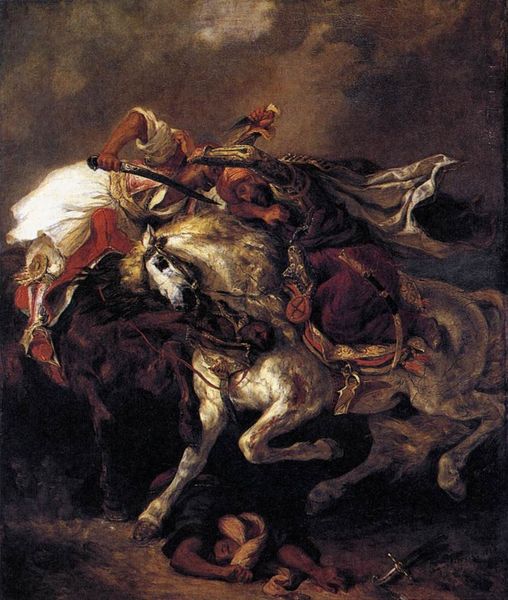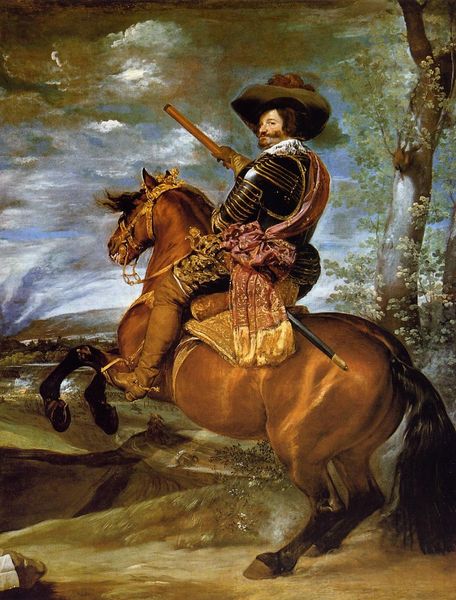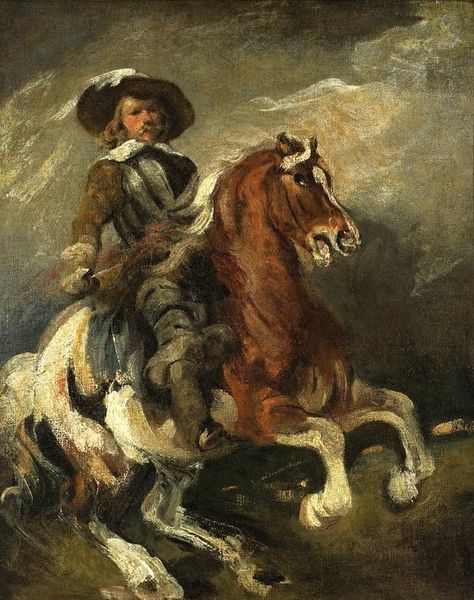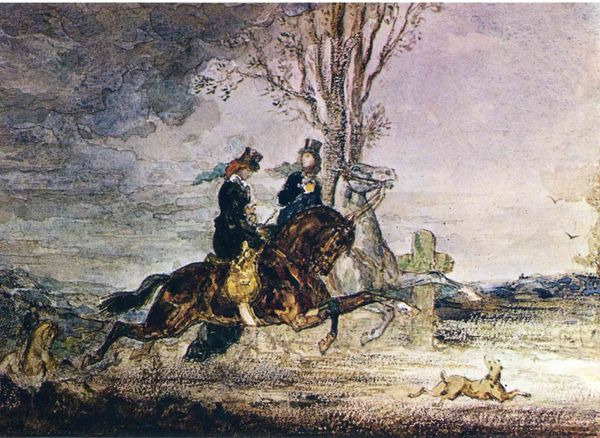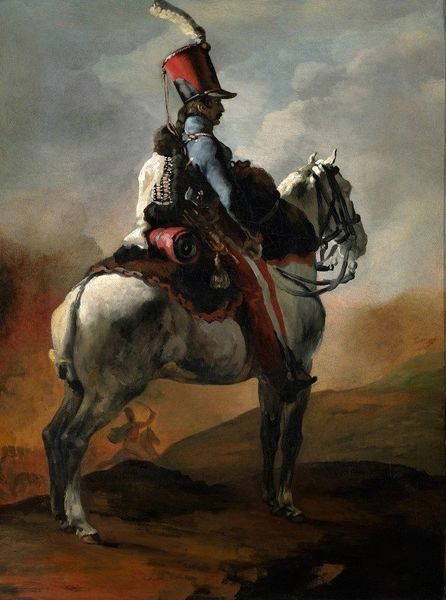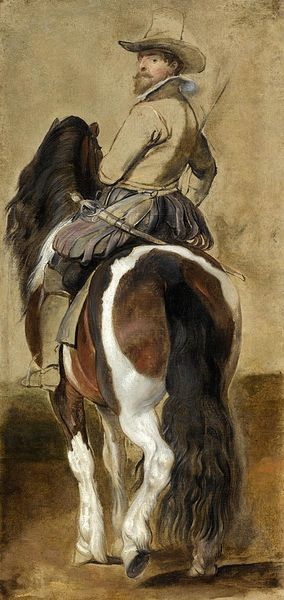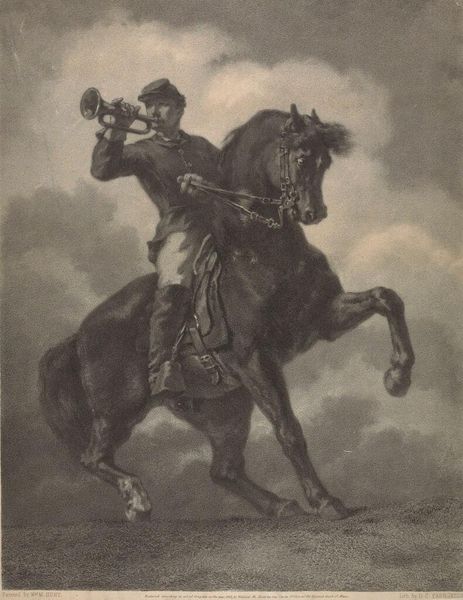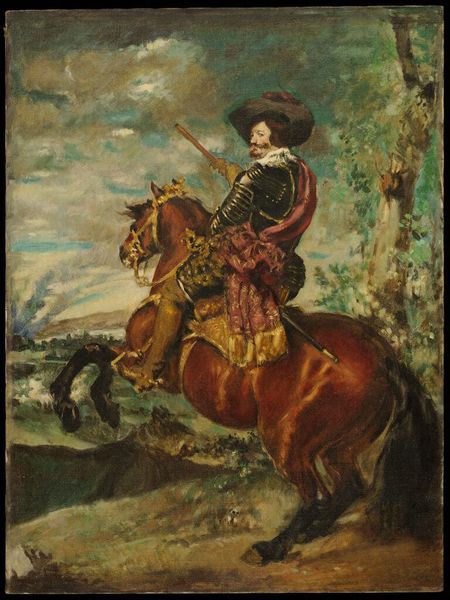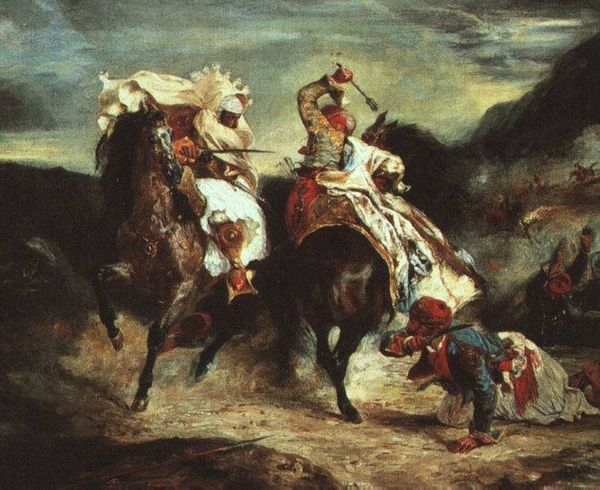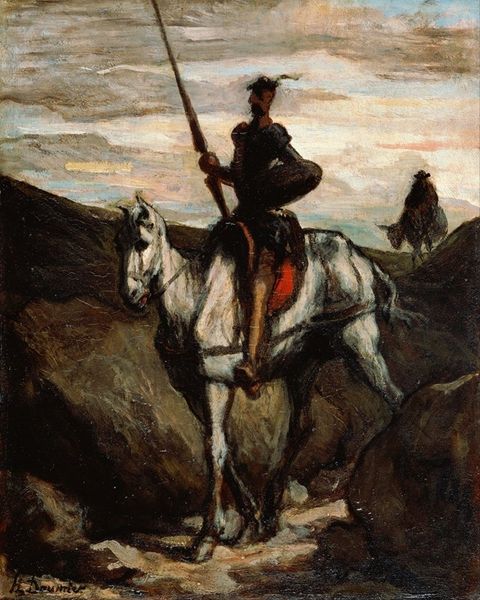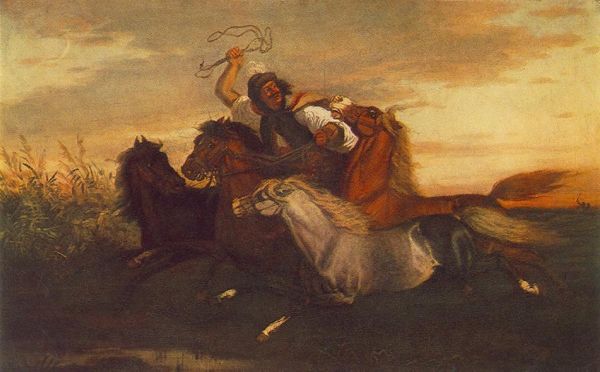
painting, oil-paint
#
portrait
#
baroque
#
dutch-golden-age
#
painting
#
oil-paint
#
landscape
#
figuration
#
oil painting
#
history-painting
Dimensions: 135 x 114.9 cm
Copyright: Public domain
Curator: Here we have Rembrandt van Rijn’s “The Polish Rider,” painted around 1655. It currently resides in the Frick Collection here in New York. Editor: The first thing that strikes me is the mood – this young man and his horse appear almost spectral against the shadowy landscape. The contrast between the rider's luminous figure and the darker background certainly lends a dramatic feel. Curator: Absolutely. The application of impasto in the rendering of the horse, particularly in its mane, contributes to the dramatic chiaroscuro effect. But, more than just drama, Rembrandt uses light here to draw our attention. Where is our eye drawn? Is it the rider, is it the landscape? What is its symbolic weight? Editor: Historically, there’s much debate about the rider's identity and what exactly he represents. Some scholars believe the rider is modeled after Polish mercenary units serving the Dutch army, representing tolerance, yet, there’s scant documented evidence of this. The question that I find intriguing is why is it housed at the Frick? Curator: Indeed. This ambiguity opens space for projection, allowing interpretations that engage with ideas of identity and exile. Editor: It raises compelling questions about the public role of art. How does its display in a private collection turned public museum affect our reception and understanding of this mysterious painting? It forces the question of ownership and power. Curator: It undeniably becomes another layer to this enigmatic character. But I believe the enduring power resides in how Rembrandt captures that poignant moment of transition between light and darkness, or even the seen and the unseen. Editor: I agree. Looking closer reveals a masterful dialogue between formal artistry and a society's ever changing perceptions. These shifting contexts reshape how we relate with an image, echoing the dynamism present within its subject matter.
Comments
No comments
Be the first to comment and join the conversation on the ultimate creative platform.
